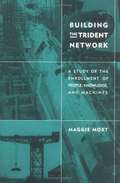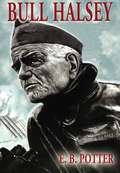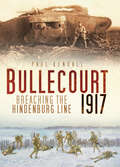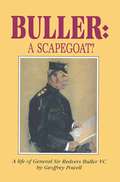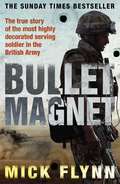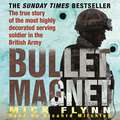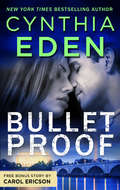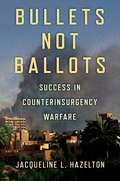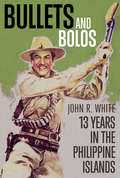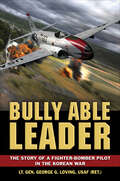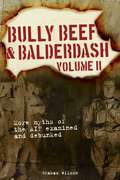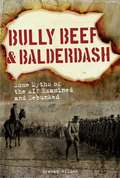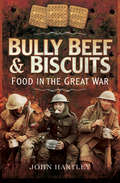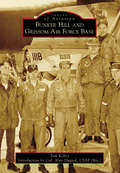- Table View
- List View
Building the Mosquito Fleet: The US Navy's First Torpedo Boats
by Richard V. SimpsonIn 1877, the U.S. Navy purchased the fast steam yacht Stiletto from the Herreshoff Manufacturing Company of Bristol, Rhode Island, for "automobile" torpedo experiments in Narragansett Bay. The submarine service was in its infancy, and interest in the self-propelled torpedo as an undersea weapon flourished. Herreshoff's fast, steam-powered boats were the first of the delivery platforms accepted by the U.S. Navy Department for experiments at the Newport Naval Torpedo Station and service during the Spanish-American War. Dating from the Civil War, the torpedo station on Goat Island in Newport Harbor was the first torpedo armory in the United States, specializing in research, development, and manufacture.Building the Mosquito Fleet: The U.S. Navy's First Torpedo Boats traces the important and often dramatic history of the involvement between the U.S. Navy and the Herreshoff brothers' marine yards over a period of more than thirty years. It is a story of enterprise, naval development, and marine manufacturing during a time of experimentation and evolution. Included are dramatic stories of the men who built and tested these dangerous new vessels. This fascinating volume preserves under one cover a concise history of the torpedo boats built by the Herreshoff Manufacturing Company. It describes design and construction innovations introduced by the Herreshoffs and traces the events that led the major navies of the world to take notice of the Herreshoffs' work.
Building the Trident Network: A Study of the Enrollment of People, Knowledge, and Machines
by Maggie MortMort approaches the United Kingdom's Trident submarine and missile system as a socio-technical network. Drawing on the sociology of scientific and technical knowledge and on actor-network theory, Mort recounts how the Trident program was built in the U.K.
Building the Wooden Fighting Ship
by James Moore James DoddsA fascinating account of the building of an historic ship, as well as a vivid and often surprising account of life and labour in the eighteenth century.In an age before industrialisation, the warship was the most complex object built by man and employed the most advanced technology of its time. Naval vessels of the period were, not surprisingly, so expensive to construct that meticulous records were kept, from the purchasing of timbers to the last details of their furnishings and armament, including even the individual names of some of the shipwrights and craftsmen.By carefully studying these records, the authors of Building the Wooden Fighting Ship have reconstructed, in extraordinary detail, the building of HMS Thunderer—a two-decked, 74-gun ship-of-the-line. In words and specially drawn illustrations, contemporary prints and paintings, the authors show every stage of the building of this ship, from the purchase and cutting of timbers right through to the launch in 1760. There are descriptions of Woolwich dockyard where she was built and details of all the skills and trades involved in her construction.First published in 1984, this book is a beautiful and highly informative work on a significant aspect of the Royal Navy and will appeal to enthusiasts, modellers, historians, and anyone with an interest in traditional crafts.Praise for Building the Wooden Fighting Ship“This book will appeal to model builders who focus on the Age of Sail and anyone interested in how these incredible pieces of art and engineering were constructed.” —Nautical Research Journal“Dodds is both a shipwright and an artist, whose black and white drawings provide readers with a clear understanding of each facet along the way. Moore sails yachts and writes books about ships. Their expertise shines through, turning what might be a ho-hum dry treatise on shipbuilding into a fascinating and easy-to-understand narrative. Originally published in 1984, this new edition is beautifully rendered and well worth the price. There are so many details presented that even those familiar with ship construction will discover new tidbits of information, while those with little understanding of the industry will come away with a deeper appreciation of what it took to build one wooden fighting ship out of more than 3,400 oak trees.” —Pirates and Privateers
Built to Last (Black Knights Inc. #12)
by Julie Ann WalkerIn the epic conclusion to the BKI series, New York Times and USA Today bestselling author Julie Ann Walker delivers her biggest bombshell yet!Welcome to Black Knights Inc.What appears to be a tricked-out motorcycle shop on the North Side of Chicago is actually headquarters for the world's most elite covert operatives. Deadly, dangerous, and determined, they'll steal your breath and your heart.After a mission-gone-sideways forces Jamin "Angel" Agassi to change his identity, he's determined to bring down the world's worst crime syndicate kingpin once and for all. That's going to be the easy part. Keeping Interpol agent Sonya Butler from discovering who he really is—and blazing another trail into his heart—is the challenge.Black Knights Inc Series:Hell on Wheels (Book 1)In Rides Trouble (Book 2)Rev It Up (Book 3)Thrill Ride (Book 4)Born Wild (Book 5)Hell for Leather (Book 6)Full Throttle (Book 7)Too Hard to Handle (Book 8)Wild Ride (Book 9)Fuel for Fire (Book 10)Hot Pursuit (Book 11)Built to Last (Book 12)What People Are Saying About Black Knights Inc:"A fast-paced, sexy thrill ride." —Kirkus for Fuel for Fire"An intriguing mix of fast-paced action and sizzling romance!" —Fresh Fiction for Thrill Ride"Exhilarating, not-to-be missed!" —RT Book Reviews for Too Hard to Handle
Bull Halsey
by E. B. PotterApplauded by the public and revered by the men who served under him, Adm. William F. Halsey was one of the leading American personalities of World War II. His reputation as a no-holds-barred fighter and his tough-guy expression earned him the nickname "Bull," yet he was also known for showing genuine compassion toward his men and inspiring them to great feats in the Pacific. Originally disclaiming, the praise heaped on him, Halsey eventually came to believe in the swashbuckling legend that surrounded him, and his conduct became increasingly controversial. Naval historian E. B. Potter, who established his reputation with an award-winning biography of Chester W. Nimitz, gets behind the stereotype of this national hero and describes Halsey at his best and worst, including his controversial actions at Leyte Gulf. To write this book Potter had full access to Halsey's family and to the admiral's private papers and provides detail of Halsey's youth and career before the war. First published in 1985, it remains the definitive study.
Bull Run
by Paul FleischmanWinner of the Scott O'Dell Award for Historical Fiction * ALA Best Book for Young Adults * ALA Notable Children's BookIn this brilliant fictional tour de force, which the New York Times called "a deft, poignant novel," Newbery Medal-winning author Paul Fleischman re-creates the first great battle of the Civil War from the points of view of sixteen participants. Northern and Southern, male and female, white and black. Here are voices that tell of the dreams of glory, the grim reality, the hopes, horror, and folly of a nation discovering the true nature of war.
Bullecourt 1917: Breaching the Hindenburg Line
by Paul KendallIn the spring of 1917 the Arras offensive was begun to break the stalemate of the Western Front by piercing the formidable German defences of the Hindenburg Line. The village of Bullecourt lay at the southern end of the battle front, and the fighting there over a period of six weeks from 11 April until late May 1917, epitomised the awful trench warfare of World War I. In Bullecourt 1917, Paul Kendall tells the stories of the fierce battles fought by three British and three Australian divisions in an attempt to aid Allenby’s Third Army break out from Arras. Approximately 10,000 Australian and 7,000 British soldiers died, many of whom were listed as missing and have no known grave. The battle caused much consternation due to the failure of British tanks in supporting Australian infantry on 11 April, but despite the lack of tank and artillery support the Australian infantry valiantly fought their way into the German trenches. It took a further six weeks for British and Australian infantry to capture the village. This book tells the story of this bitter battle and pays tribute to the men who took part. Crucially, Paul Kendall has contacted as many of the surviving relatives of the combatants as he could, to gain new insight into those terrible events on the Hindenburg Line.
Buller: A Life of General Sir Redvers Buller VC
by Geoffrey PowellA re-examination of Zulu War hero Redvers Buller, who was blamed for British defeats in the Boer War of 1899-1902.
Bullet Magnet: Britain's Most Highly Decorated Frontline Soldier
by Mick FlynnA raw, honest and evocative account of life as the most highly decorated serving soldier in the British Army.From the breakneck pace of an opening where he is in action in Helmand province, under fire from the Taliban, Mick Flynn pulls no punches. It's obvious that he is a trained killer. But how did it reach this point? The journey starts with his childhood, a working class lad, learning to fight and finding himself repeatedly on the wrong side of the law. Even after joining the Army he is found at fault and jailed, an experience that finally shocks him into behaving himself. From there, it is off to Northern Ireland and straight into hotspots where Mick's courage and determination are all that keep him alive. There's love too: his estranged wife, Denise, is being brought back into the picture, just as Mick tries to start a new life with his girlfriend Rachel. Can he manage to separate his ferocious soldiering persona from the real Mick? As things remain complicated, Mike flings himself into further tours of duty, in Bosnia, Iraq, the Falklands. Action-packed, shoots-from-the-hip narration from an engaging hero, this is gritty realism at its most shocking.
Bullet Magnet: Britain's Most Highly Decorated Frontline Soldier
by Mick FlynnA raw, honest and evocative account of life as the most highly decorated serving soldier in the British Army.From the breakneck pace of an opening where he is in action in Helmand province, under fire from the Taliban, Mick Flynn pulls no punches. It's obvious that he is a trained killer. But how did it reach this point? The journey starts with his childhood, a working class lad, learning to fight and finding himself repeatedly on the wrong side of the law. Even after joining the Army he is found at fault and jailed, an experience that finally shocks him into behaving himself. From there, it is off to Northern Ireland and straight into hotspots where Mick's courage and determination are all that keep him alive. There's love too: his estranged wife, Denise, is being brought back into the picture, just as Mick tries to start a new life with his girlfriend Rachel. Can he manage to separate his ferocious soldiering persona from the real Mick? As things remain complicated, Mike flings himself into further tours of duty, in Bosnia, Iraq, the Falklands. Action-packed, shoots-from-the-hip narration from an engaging hero, this is gritty realism at its most shocking.
Bullet Magnet: Britain's Most Highly Decorated Frontline Soldier
by Mick FlynnFrom the breakneck pace of an opening where he is in action in Helmand province, under fire from the Taliban, Mick Flynn pulls no punches. It's obvious that he is a trained killer. But how did it reach this point? The journey starts with his childhood, a working class lad, learning to fight and finding himself repeatedly on the wrong side of the law. Even after joining the Army he is found at fault and jailed, an experience that finally shocks him into behaving himself. From there, it is off to Northern Ireland and straight into hotspots where Mick's courage and determination are all that keep him alive. There's love too: his estranged wife, Denise, is being brought back into the picture, just as Mick tries to start a new life with his girlfriend Rachel. Can he manage to separate his ferocious soldiering persona from the real Mick? As things remain complicated, Mike flings himself into further tours of duty, in Bosnia, Iraq, the Falklands. Action-packed, shoots-from-the-hip narration from an engaging hero, this is gritty realism at its most shocking.Read by Richard Mitchley(p) 2010 Orion Publishing Group
Bullet Proof
by Matt Croucher GCAFGHANISTAN, FEBRUARY 2008: in an out-of-control, dangerous country torn apart by war, littered with Taliban guerrilla forces and thousands of miles from home, Lance Corporal Matt Croucher, a Royal Marine with 40 Commando, accidentally activates a grenade whilst on a covert patrol behind enemy lines. With only a split second to react, Croucher's instincts kick in and he throws himself beside the grenade, reasoning that saving the lives of his three comrades was worth the likelihood of losing his own. Miraculously, and against all the odds, Croucher survived, and mere hours later was taking part in a gun battle against local insurgent fighters, demonstrating a raw, unique courage and devotion to military duty that would later see him awarded the George Cross - a distinction bestowed only on those who perform acts of the greatest heroism or of the most conspicuous courage in circumstances of extreme danger. Croucher's George Cross would make him famous around the world. But his story is much more than just one heroic act in isolation. His is a life of bullets, blood and loyalty, and of lives saved and lives taken. From a young marine aged 19, when he was one of the first 200 Allied soldiers to invade Iraq back in 2003 as part of an elite force of British Marines and US Special Forces, through to his second tour of duty in 2004, when he suffered a fractured skull following a roadside bomb attack, only to return to action just a week later, and then being thrust into hellish Afghanistan, Croucher has seen vicious fighting, intense gun battles, roadside ambushes, and witnessed the death and injury of close colleagues on an almost daily basis. This is his incredible story: a searing, vivid, non-stop account of one man's heroism and courage under fire, in the most gruelling combat environment since the Second World War.
Bulletproof & Locked, Loaded and SEALed: A Romantic Suspense Novel (Shadow Agents)
by Cynthia Eden Carol EricsonHE WAS ASSIGNED TO PROTECT HER—NOT MAKE HER HIS OWN IN THIS SHADOW AGENTS CLASSIC FROM NEW YORK TIMES BESTSELLING AUTHOR CYNTHIA EDEN, ORIGINALLY PUBLISHED AS GLITTER AND GUNFIRE IN 2013.Former Army Ranger Cale Lane had his orders: keep Cassidy Sherridan alive at all costs. But who sent six armed men storming the Rio ballroom to take her out? The gorgeous party girl wasn’t giving it up. Now he had a more urgent mission: uncover Cassidy’s secrets...one by one.FREE BONUS STORY INCLUDED IN THIS VOLUME!Enjoy LOCKED, LOADED AND SEALED by Carol Ericson from her RED, WHITE AND BUILT series!The SEAL’s secret assignment had been to protect a certain important doctor. But when the man is murdered, Austin Foley’s mission changes. The navy sniper must now protect the doctor’s protégé the irresistible Sophia Grant, at any cost. There’s only one problem: Sophia has no idea what those secrets she holds. Originally published in 2017
Bulletproof SEAL: Bulletproof Seal (red, White And Built, Book 6) / Surrogate Escape (apache Protectors: Wolf Den, Book 1) (Red, White and Built #6)
by Carol EricsonIn this romantic suspense adventure, a disgraced CIA agent presumed dead must find her ex and clear her name to get back her life.Branded a traitor, Rikki Taylor is in the sights of sniper Quinn McBride’s rifle. Yet the Navy SEAL knows this woman intimately, and there’s no way she’d betray her country . . . or him. Saving her is his number one priority. Discovering her real secrets, including the baby she’s keeping from him, can wait—first, they must make it out alive.
Bullets Not Ballots: Success in Counterinsurgency Warfare (Cornell Studies in Security Affairs)
by Jacqueline L. HazeltonIn Bullets Not Ballots, Jacqueline L. Hazelton challenges the claim that winning "hearts and minds" is critical to successful counterinsurgency campaigns. Good governance, this conventional wisdom holds, gains the besieged government popular support, denies support to the insurgency, and makes military victory possible. Hazelton argues that major counterinsurgent successes since World War II have resulted not through democratic reforms but rather through the use of military force against civilians and the co-optation of rival elites.Hazelton offers new analyses of five historical cases frequently held up as examples of the effectiveness of good governance in ending rebellions—the Malayan Emergency, the Greek Civil War, the Huk Rebellion in the Philippines, the Dhofar rebellion in Oman, and the Salvadoran Civil War—to show that, although unpalatable, it was really brutal repression and bribery that brought each conflict to an end. By showing how compellence works in intrastate conflicts, Bullets Not Ballots makes clear that whether or not the international community decides these human, moral, and material costs are acceptable, responsible policymaking requires recognizing the actual components of counterinsurgent success—and the limited influence that external powers have over the tactics of counterinsurgent elites.
Bullets and Bolos: Fifteen Years In The Philippine Islands
by John R. WhiteBullets and Bolos, first published in 1928, is the memoir of Colonel John White's 15 years in the Philippines as a member of the Philippine Constabulary. The Constabulary, established in 1901, was organized to quell unrest on the islands. White took part in numerous engagements against the rebellious Moros on Mindanao and Jolo, including the infamous First Battle of Bud Dajo (also known as the Bud Dajo Massacre in which 800-1,000 men, women and children were killed). Included are 16 pages of photographs.From the dust-jacket: Here is a candid account of the early days of American occupation in the Philippines. Colonel White describes the work, both hazardous and constructive, done by the American officers of the Philippine Constabulary, and incidentally paints a memorable picture of the life of Americans and Filipinos in the provinces outside the large cities. In telling of the military operations of the Constabulary, Colonel White pays high tribute to the loyalty and fighting qualities of the native troops, Visayans, Tagalogs, Bicols, and Moros, who stood by him in many a jungle fight. Many of the daily incidents of the service, such as tracking bandits, attacks on volcano forts, and ruling camps of convicts without guards, have the ring of genuine adventure. Colonel White was twice wounded during the years of guerrilla warfare, nearly lost his leg, and was awarded the Medal of Valor. Among his noteworthy achievements as an administrator was the organization of the first military academy for Filipino cadets, at Baguio—the Philippine West Point. Unlike many writers on the Philippines, Colonel White has no ax to grind and no pet theory to advance about how the islands should be governed. In Bullets and Bolos he tells the story of a vivid period of his own adventurous life, a story made doubly interesting by the intimate part the author played in a historical movement of great import to American readers.
Bullets and Bread: The Story of the Sacrifice in American Homes to Feed Troops in WWII
by Kent WhitakerThe U.S., a collection of cities serviced by outlying farms and producers, is amazingly transformed into a nation serviced by a national food production industry to meet the needs of fighting World War II. The armed services, 350,000 strong at the war's start, quickly grew to 11,000,000 men and women who had to be fed, along with the millions more on the home front. This is the story of the transformation to meet those needs and the interesting stories about the people, prominent and not-so prominent, of the era and the food they liked to eat and more frequently, what they had to eat. Many stories from the troops on the front are included and so too, many recipes suitable for today's dining
Bullseye: SEAL (Red, White and Built #3)
by Carol EricsonA Navy SEAL’s mission to protect the vulnerable widow of a cartel member leads him into temptation in this romantic suspense adventure.Saving Gina De Santos from attempted kidnappings is one thing. But Navy SEAL sniper Josh Elliott’s assignment requires getting close to the ravishing widow to ascertain what she knows. And that feels more dangerous than combat. In her presence, Josh has to remind himself she’s not to be trusted.Gina’s drug-kingpin father had been negotiating with terrorists when a CIA raid killed him and Gina’s husband. Now someone is after the vulnerable single mom and her little boy. While traveling to the Caribbean in search of clues, Josh and Gina find their sizzling desire overpowering. But when they’re attacked again, they must overcome their mutual mistrust to survive at the hands of an unknown enemy.
Bully Able Leader: The Story of a Fighter-Bomber Pilot in the Korean War
by George G LovingThis USAF pilot&’s memoir &“masterfully describes the progress of the war . . . [and] superbly chronicles the many close-support and interdiction missions.&” —Air & Space Power Journal This action-packed account by an American pilot and squadron commander in the Korean War reveals just what it was like to fly the F-80 Shooting Star against MiGs and ground targets. Using the radio call sign of &“Bully Able Leader,&” Lieutenant General George G. Loving flew 112 combat missions in five major campaigns from 1950–1951. This well-written, first-hand account of life in the cockpit of a USAF fighter jet will appeal to aviation enthusiasts and military history buffs alike. &“Valuable insights of the flying environment that earmarked this first war of extensive use of jet combat aircraft.&” —Col. Joe McCue, USAF (Ret.), Air Power History
Bully Beef & Balderdash: More Myths of the AIF Examined and Debunked
by Graham WilsonThe late Graham Wilson delighted in his self-appointed role as the AIF's myth buster. In this, his second and final volume of Bully Beef and Balderdash, he tackles another eight popularly accepted myths, exposing the ‘Water Wizard’ of Gallipoli who saved an army, dismissing the old adage that the ‘lions of the AIF’ were led by British ‘donkeys’, debunking the Gallipoli legends of the lost sword of Eureka and ‘Abdul the Terrible’, the Sultan’s champion marksman sent to dispose of AIF sniper Billy Sing, and unravelling a series of other long-standing fictions. Finally, he turns his formidable forensic mind to the ‘lost’ seven minutes at The Nek, the early cessation of the artillery barrage which led to the slaughter of the Light Horsemen immortalised in Peter Weir’s Gallipoli. Wilson’s crusade to debunk such celebrated fictions was born of the conviction that these myths do very real damage to the history of the AIF. To demythologise this nation’s Great War military history, he argues, is to encourage Australians to view the AIF’s record on its own merits. Such are these merits that they do not require any form of embellishment to shine for all time. This book is a tribute to Graham Wilson’s extraordinary passion for truth and fact and his drive to set the historical record straight.
Bully Beef & Balderdash: Some Myths of the AIF Examined and Debunked
by Graham WilsonThe Australian Imperial Force, first raised in 1914 for overseas war service, became better known by its initials - the "AIF". There was a distinct character to those who enlisted in the earliest months and who were destined to fight on Gallipoli. During the war the AIF took its place among the great armies of the world, on some of history's oldest battlefields. The Australians would attack at the Dardanelles, enter Jerusalem and Damascus, defend Amiens and Ypres, and swagger through the streets of Cairo, Paris, and London, with their distinctive slouch hats and comparative wealth of six shillings per day. However, the legend of the AIF is shrouded in myth and mystery. Was Beersheba the last great cavalry charge in history? Did the AIF storm the red light district of Cairo and burn it to ground while fighting running battles with the military police? Was the AIF the only all-volunteer army of World War I? Graham Wilson's Bully Beef and Balderdash shines an unforgiving light on these and other well-known myths of the AIF in World War I, arguing that these spectacular legends simply serve to diminish the hard-won reputation of the AIF as a fighting force. Graham Wilson mounts his own campaign to rehabilitate the historical reputation of the force and to demonstrate that misleading and inaccurate embellishment does nothing but hide the true story of Australia's World War I fighting army. Bully Beef and Balderdash deliberately tilts at some well-loved windmills and, for those who cherish the mythical story of the AIF, this will not be comfortable reading. Yet, given the extraordinary truth of the AIF's history, it is certainly compelling reading.
Bully Beef & Biscuits: Food in the Great War
by John HartleyA &“well-researched, well-written, humorous and engaging&” exploration of soldiers&’ rations during World War I (Destructive Music). Napoleon Bonaparte is often credited with saying that &“an army marches on its stomach.&” A hundred years after his time, the soldiers of the Great War would do little marching. Instead, they would fight their battles from cold, muddy trenches, looking out across No Man&’s Land towards another set of trenches that housed the enemy. It is one of the remarkable successes of the war that they rarely went hungry. During the war, the army grew from its peacetime numbers of 250,000 to well over 3 million. They needed three meals a day and, using the men&’s own letters and diaries, John Hartley tells the story of the food they ate, how it got to them in those trenches and what they thought of it. It&’s the story of eating bully beef and army &“dog biscuits&” under fire and it&’s the story of the enjoyment of food parcels from home or eating egg and chips in a café on a rare off-duty evening. It&’s also the story of the lives of loved ones at home—how they coped with rationing and how women changed their place in society, taking on jobs previously held by men, many working as farm laborers in the Women&’s Land Army. This is a book which will appeal to food lovers as well as those with an interest in military and social history.
Bundeswehr und Gesellschaft - Wahrnehmungen im Wandel (Militär und Sozialwissenschaften/The Military and Social Research #57)
by Martin Elbe Angelika Dörfler-DierkenDas Buch erscheint als Band 57 der Reihe Militär und Sozialwissenschaften/The Military and Social Research, herausgegeben von Martin Elbe und Angelika Dörfler-Dierken im Auftrag des Arbeitskreises Militär und Sozialwissenschaften (AMS). Anlässlich des 50. Jahrestages des AMS fand eine Tagung in Kiel zum Thema „Bundeswehr und Gesellschaft – Wahrnehmungen im Wandel" statt. Das vorliegende Buch fasst die dort vorgestellten Beiträge zum Thema zusammen und ergänzt diese um ausgewählte Beiträge. Das Thema wird von zahlreichen Professorinnen und Professoren, Praktikern aus dem BMVg und von Forschenden aus unterschiedlichen Forschungseinrichtungen beleuchtet sowie von der Wehrbeauftragten des Deutschen Bundestages kommentiert. Wandlungspotenziale und -bedarfe werden ebenso deutlich wie Kontinuitätsmuster.
Bunker Archeology
by Paul VirilioIn this book, urban philosopher and cultural theorist Paul Virilio turns his attention to the ominous yet strangely compelling German bunkers from WW II that lie abandoned on the coast of France. These ghostly reminders of destruction and oppression prompt Virilio to consider the nature of war and existence, with both the Second World War and contemporary times. The author’s haunting photographs are accompanied by his analysis of the architecture of war in both philosophical and concrete terms. Virilio discusses fortresses and military space in general and the bunkers themselves, including facsimiles of original military maps and extracts from Hitler’s "Directives of War."
Bunker Hill and Grissom Air Force Base (Images of Aviation)
by Tom Kelley Col. Alan Dugard Ret. UsafAs the US Navy recovered from the devastating attack on Pearl Harbor, the aircraft carrier earned a place alongside the battleship, and the Navy grew its air force. Pilots were needed as fast as American industry could build airplanes, and Indiana became the home of a naval air-training center. After fascism's defeat with the end of World War II, a potentially more deadly Cold War brought the need for a deterrent force capable of surviving a nuclear attack and then completely destroying the enemy. A vital part of that force moved into the old Hoosier Navy Base in 1954. For more than three decades, Bunker Hill and Grissom airmen stood on the forward wall of America's freedom. Images of Aviation: Bunker Hill and Grissom Air Force Base tells their story through an amazing collection of declassified US Air Force photographs.

